On the road with the new McLaren 720S
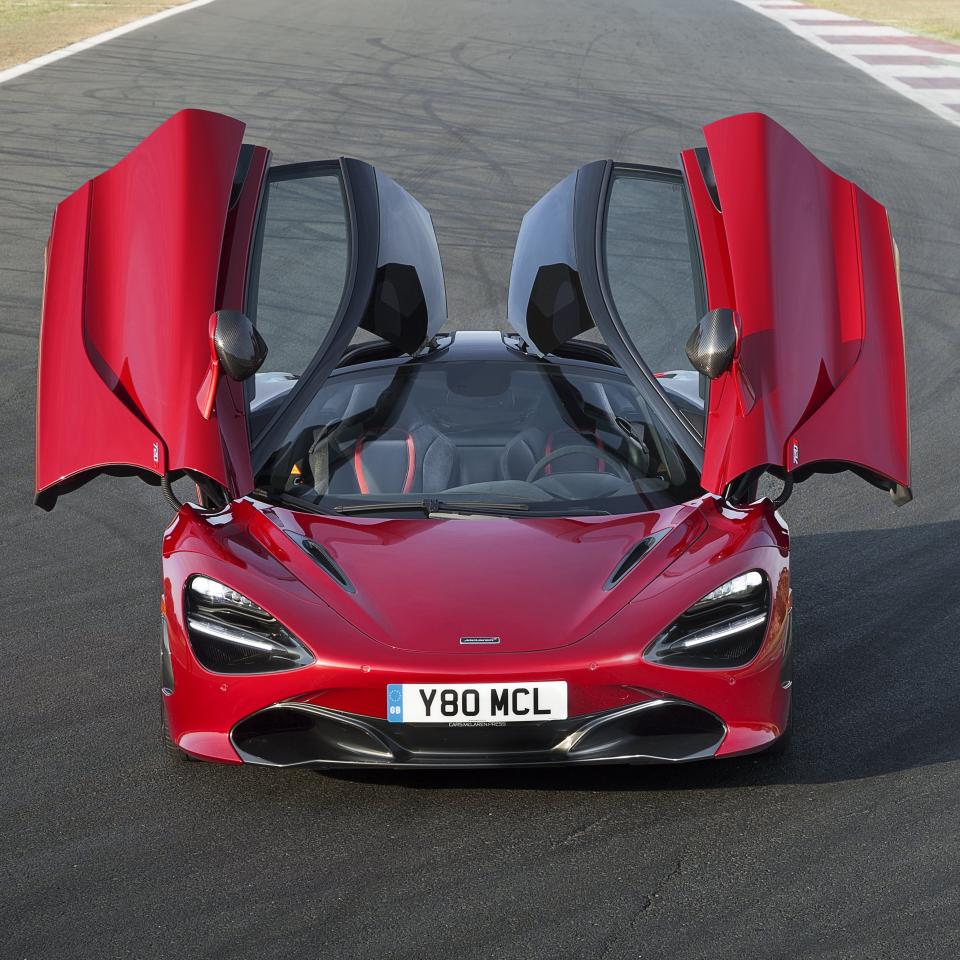
The McLaren 720S is more than just another supercar. Within minutes behind the wheel, that much is clear. Forget what you know about being fast - this car sets new boundaries for anything under seven figures. It represents the opening of a new chapter for McLaren, too - a progression measured in more than numbers. If previous cars showcased elements of greatness, this brings them together like never before.
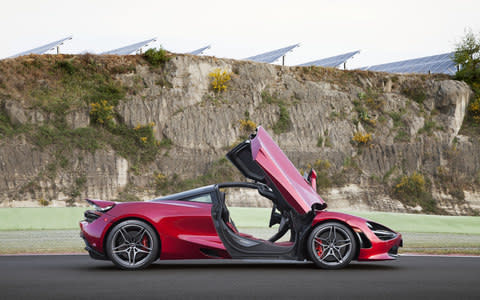
McLaren Technology Centre, in Woking, is now producing approximately 3,200 cars a year. There are five models in McLaren’s range, crowned by the 720S, and we have seen the arrival of the first British hypercar in the shape of the P1, with a successor (codenamed BP23) in the works. Each new arrival raises the stakes against Ferrari, Porsche, Lamborghini or Aston Martin - companies with a combined total of 314 years experience in building fast cars.
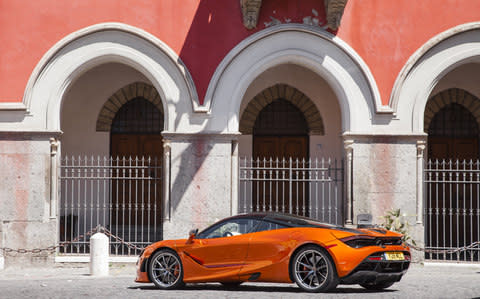
Six years ago, at the Geneva motorshow McLaren pulled back the covers on a car it was calling the MP4-12C, which I first drove in 2013, as it neared the end of its lifespan. The overly technical name (which followed a convention used in its F1 cars) had been abridged, as McLaren learnt the first of many lessons about branding and presentation. It had been breathed upon by McLaren Special Operations (MSO) - the demand for an elite branch is something that was recognised from day one - but was fundamentally the same car.
I loved it; here was a supercar that at 6’3” I could fit in comfortably, and moreover, could feel at home in after half an hour. Thoughtful touches like the nose lift - handy for speed bumps - were already present; the handling was balanced and the ride - for a 1400kg carbon fibre tub on 20 inch Pirelli P Zero tyres - was sublime. And it went like the clappers.
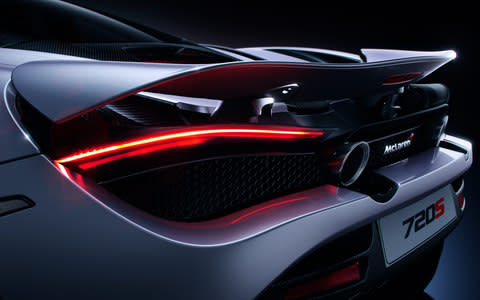
The recognition that to play at Ferrari or Lamborghini’s level requires a degree of theatre, which comes more naturally to those in Modena, was an important one, but where McLaren really impresses is in ramping up the flamboyance without ceding ground on the science. Exhibit A is the thick sculpted doors of the 570, which bear inspection from every angle; the 720S takes the idea even further, having doors that are effectively a two-layered design, allowing air to flow through the middle and over the rear haunches. All the aerodynamic benefits without disturbing the flowing lines.
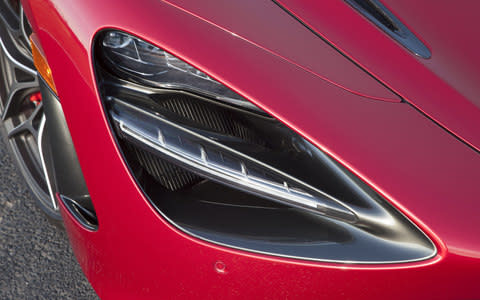
Which brings us onto the 720S’s looks as a whole. When it broke cover at Geneva in March, opinion was divided. Undoubtedly striking, but does it work as a whole? The eye-socket headlight apertures (which double as air intakes) weren’t immediately to everyone’s taste, including my own. There’s a reptilian nature to them that’s not exactly welcoming, and they dominate photographs of the car. Colour choice makes a big difference too.
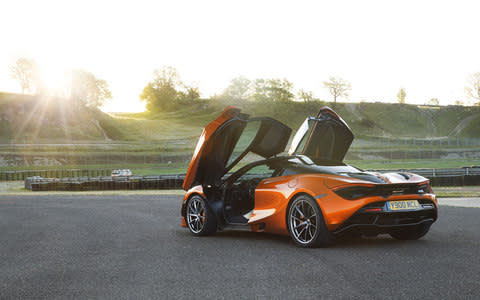
If fun is your goal, you’re best advised to be inside the car despite touches on the exterior, such as the way the air channels through the doors and tapers together behind the cockpit, drawing your attention to the engine cover which is illuminated in red. McLaren has continued to spice things up - as if a 710 horsepower, 4-litre twin turbo coupe that weighs just 1,419kg needs added fizz - including for the first time a variable traction control (sort of, but not really, a “drift mode”) that lets you dial in how tail-happy you’d like it to get. Intended for track use, it’s ultimately a bit of a gimmick, but its presence shows that ties have definitely been loosened in Woking.
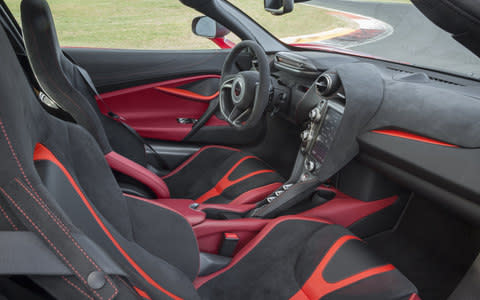
In any case, I found the 720S quite eager to send the rear wheels in a different direction without toying with the Variable Drift Control. In common with all McLarens, it bestows so much confidence right from the off; before long you realise that it’s absolutely longing to be pushed. The result is intense. It redefines overtaking gaps - in the time it takes you to think “have I got space?”, you’ve already done it - and on a track it absolutely flies.
Back inside the car: even if you’re not tearing down an Italian country road (and why aren’t you?), you are going to find it a very agreeable place to be. The seating position is spot on, and under that huge dome - which does give you a goldfish feeling the first time - visibility is superb. Before I could drive on the aforementioned Tuscan tarmac, I had to navigate out of Rome, and it was so straightforward that before long I was slotting it into gaps like a battered old Fiat 500. The interior was specced with one eye on the track, with alcantara everywhere and the optional, manually-adjusted bucket seats. These I was thankful for in the corners, and they give a bit more legroom too, but should you be considering them, you’ll need to keep yourself as lean as the car.
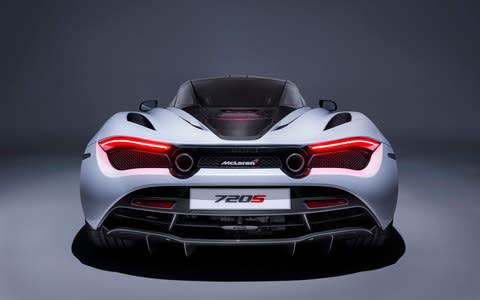
Much was made at launch of the 720S’s folding dashboard display. Put the car’s powertrain in track mode and the normal dash swivels through 90 degrees, leaving you with a thin strip of lights that give you a rev counter, speed and gear indicator, and a slightly less encumbered view of the road. Personally, I found myself manually overriding it to keep the full display because the car’s power is so bountiful, so accessible that I wanted it in track the whole time, which meant retaining useful info like the sat nav. But that’s just me.
Track mode (your other choices are Comfort or Sport, adjustable separately for the handling and the powertrain) brings with it another gimmick which I did enjoy. Start the car in this mode - it needs to be warmed up and won’t do this from cold - and you get the normal bark of revs from the sports exhaust, plus after a moment’s pause, a single raucous bang. It won’t endear you to anyone in the vicinity, but it made me chuckle wickedly.
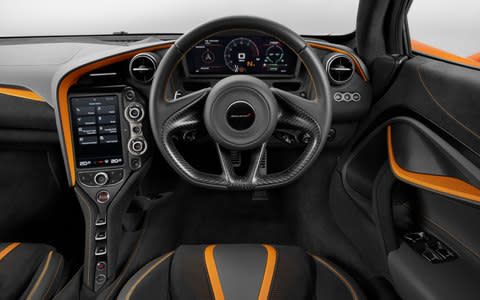
Words like “unimprovable” get bandied around a lot when something is this good, and usually over time are exposed as hyperbole. But while it is inevitable that McLaren already has the next step waiting in the wings - a 750LT, perhaps? - with more power and less weight, when you talk to the brand’s engineers the question of “where next?” genuinely troubles them. We are near the edge of the envelope here. Physics and finance ensure that outright top speeds and 0-60 times are now pretty much as good as they’re going to get; McLaren is talking about 0-124 as a more interesting metric, and says there are other places to find greater performance too.
But having driven the 720S - and this goes for its rivals too - it is hard to see the need for anything more. It’s fast beyond belief; it delivers more drama than ever before (if not quite as much as the Italians, still) and it does it all with a firm unflappability.
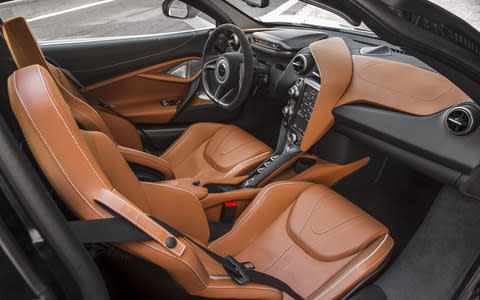
In under a decade McLaren has reached an enviable point indeed, and perhaps predictably, has no plans to ease off. Production is set to rise to 4,500 cars a year as another 15 new models join the ranks in the next six years. That includes the recently-launched 570S Spider, unveiled at the Goodwood Festival of Speed in June, and will also see at least half of the brand’s range employ some form of hybrid powertrain. With profits on up (the company has returned a profit for four years straight now, in itself no mean feat for a niche carmaker) it is hard to say McLaren is overreaching. It’s going to be an exciting few years.

 Yahoo Finance
Yahoo Finance 